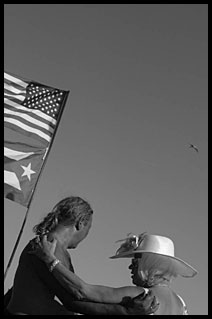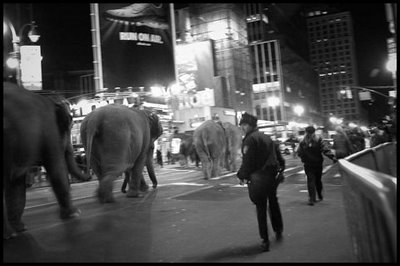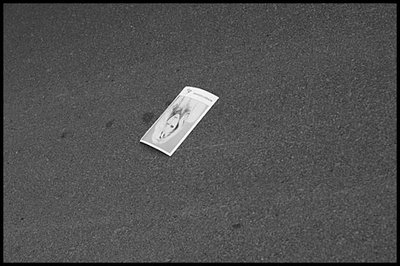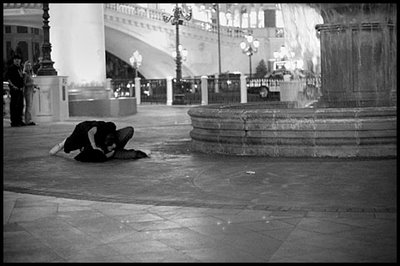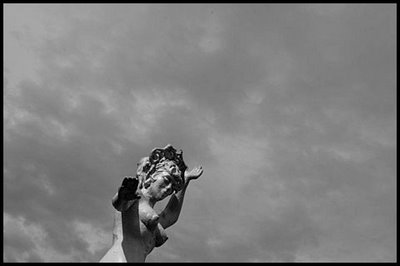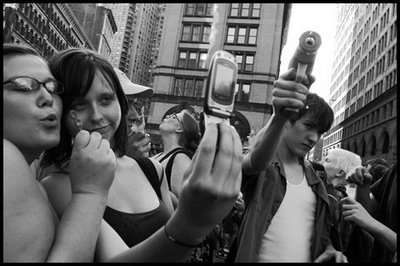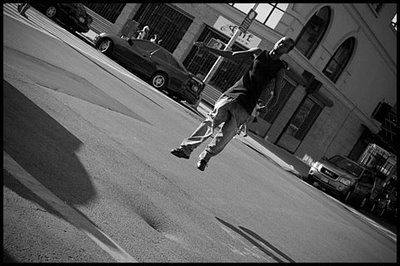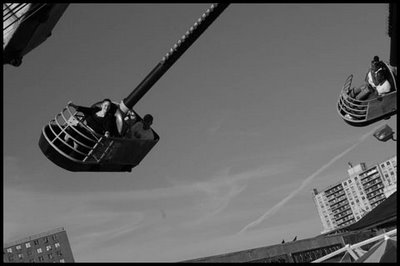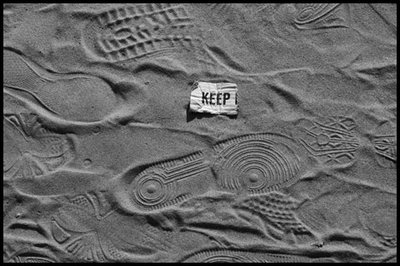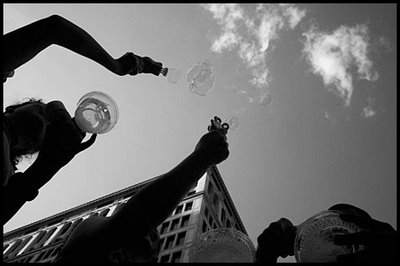
I've let my camera rest these last two weeks while I've been editing the last project and sorting out the next. So, of course, I have had a number of unphotographable moments. Three I have missed:
A man with Down's Syndrome gently swinging a child's purse and hitting an older man again and again. (The older man said: "Since you are going" whack "to live with me for two weeks" whack "we're going to need" whack "to establish" whack "some ground rules.")
A man walking casually down 1st Avenue with a plastic bag over his head, seemingly quite comfortable and at home in his bag.
A couple kissing so intensely on the steps of the Metropolitan Museum that even New Yorkers turned to look.
Above: an image from my street photography portfolio Waiting for the April Fool's Parade (copyright 2006 Ted Fisher).
